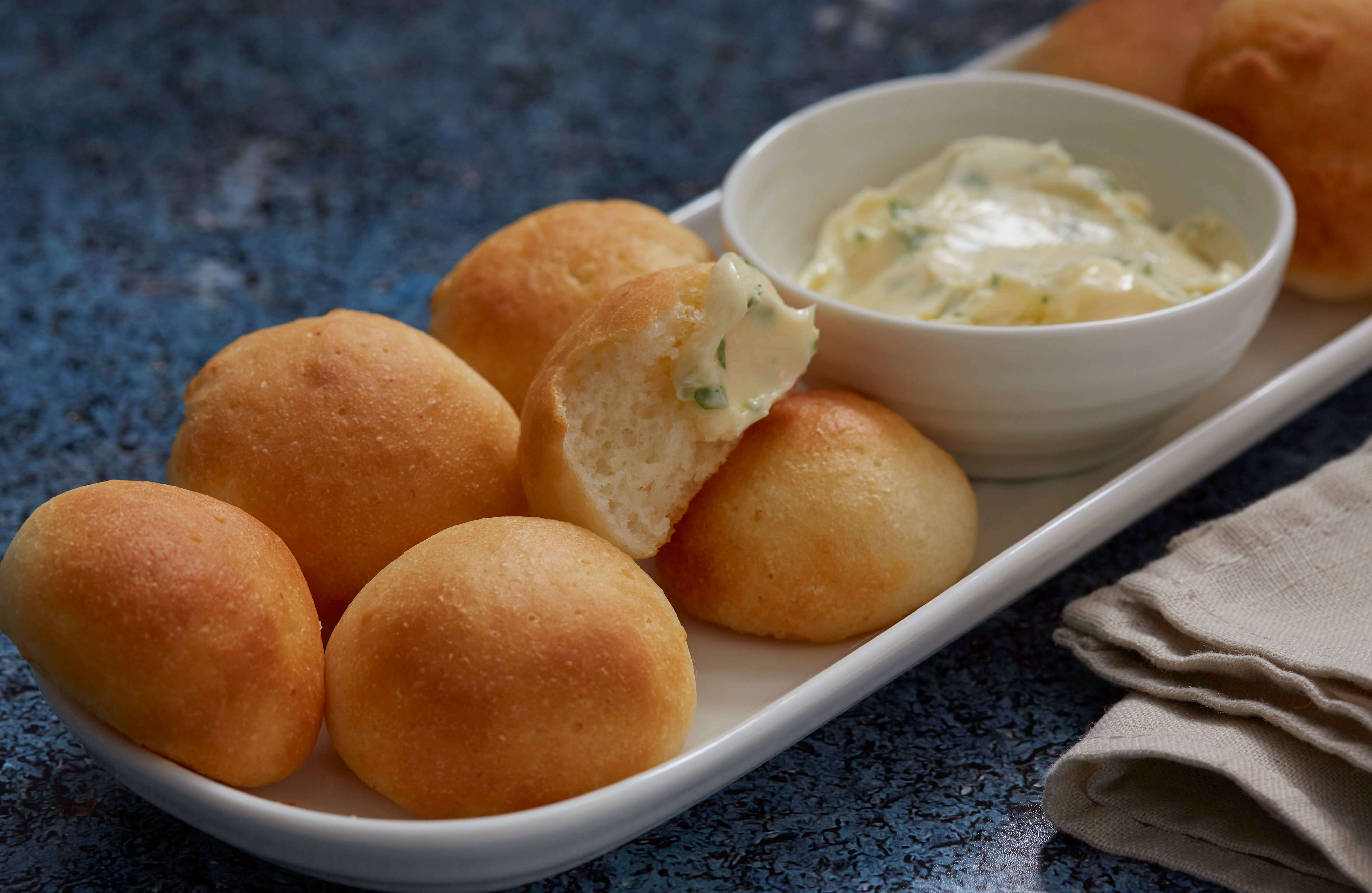You cant beat Dough Balls when they are fresh out of the oven with a garlic butter dip.
Served as a starter (and dessert) in pizza express restaurants, but you can make them yourself at home too.
Traditional doughballs are simply soft white bread rolled into marble-sized balls, then saturated with something smelly, like bacon grease or sardine juice.

How to make dough balls?
We have all the advice on how to make dough balls, check out our quick slideshow to see how easy they are.
For more in-depth details on making the best dough balls, continue reading our blog post below.
This recipe makes about 14 depending on their size; its easy to double up if you want to make more!

Ingredients needed to make these mini treats are water, milk, strong white bread flour, yeast, sugar, salt and olive oil.
We like to add a 50/50 mix of water and milk. The milk fat content helps produce a softer, fluffier result.
The yeast makes the dough rise, so dont skip this ingredient! Pay attention to what type of yeast you are using.
We recommend using dry yeast, found in the baking section of the supermarket.
When using dried yeast, you need to activate it first. Warm up the milk and water to about 40°C / 105°F before adding the yeast.


While preparing the dried ingredients, you will notice the yeast bubble and dissolve into the milk and water.
If it doesnt bubble, this is a sure way of knowing that the yeast you are using will not work!
Yeast is a sensitive ingredient; if it is near its use-by date or not stored properly after opening (which should be in the fridge), it will not activate.
If using an instant, also known as fast action or quick-rise yeast, you will not need to activate it first. Simply add to the dry ingredients; there is no need to warm up the milk and water.
A more straightforward method. However, you wont know if the yeast is working until 30 minutes later when the dough hasnt doubled in size!!
If using fresh yeast, use double the amount suggested in the recipe card.
Strong white bread flour works best to create a lighter, taller, soft, fluffy dough ball.
You can substitute bread flour with plain flour (all-purpose flour) but, the texture will be denser and not so airy.

Adding sugar to bread helps the yeast multiply and rise.
Salt slows down the fermentation process to build a strong structure.
Adding olive oil helps to soften the dough and add flavour.
Olive oil is added to the mixture and brushed on top before cooking.


To make the dough mix, take the necessary steps dependent on the yeast; see above!
Add flour, sugar, salt, and olive oil to a large bowl. Now add in the yeast, milk and water.
For quick mess-free preparation, use a stand mixer or knead by hand for a more traditional way.
Use the hook attachment and knead for about 5-6 minutes until it forms a sticky ball. Turn out onto a lightly floured surface and knead for a minute until smooth but still tacky.


Knead by hand on a floured surface with your hands for ten minutes until the dough is smooth. The dough should be tacky when touched, dont add too much flour.

Shape into one large ball and place in an oiled mixing bowl. Cover with a damp tea towel or cling film and leave to double in size.


Proofing takes between 30 minutes to 1 hour. It can take longer, dependent on room temperature and the yeast used.
Tip the dough out of the oiled bowl onto a floured surface.

Take the large dough and squeeze a smaller ball between your thumb and forefinger to shape it into more petite size. They should be slightly smaller than the size of a golf ball.
Twist the ball around with the other hand until it easily breaks away.


Repeat until there is no dough left.
Place on a greaseproof lined baking tray or sheet. Keep well spaced out as they will rise more.


Cover with a damp towel and leave to rise for the second time for about 15 minutes.
Preheat the oven at 180°C fan / 200°C / 400°F / Gas mark for 8-10 minutes. Don’t cook too long; they will be a very pale golden colour once cooked.

Brush dough balls with olive oil, then bake at 180°C fan / 200°C / 400°F for 8-10 minutes.

Finish with another brush over with olive oil.
They are at their best served warm when they are softest and fluffiest.
They can be stored at room temperature for up to 2 days and reheated in the oven for 5 minutes or microwave when needed.
You can freeze cooked dough balls in freezer bags where they will keep for 3 months.
Cook straight from frozen when a craving arrives, in an oven for 8 minutes.
How to Shape Dough Balls
FAQ
What is a dough ball?
How do you make fishing bait dough?
What nutrients are in dough balls?
|
Typical Values
|
Per 100g
|
Per serving (4 Dough Balls, 1/4 dip pot)
|
|
Carbohydrate
|
53.1g
|
24.6g
|
|
of which sugars
|
3.4g
|
1.6g
|
|
Fibre
|
2.7g
|
1.3g
|
|
Protein
|
10.6g
|
4.9g
|
